by Dr. G.S. Potter
LatinaLista
(Editor’s Note: The following article originally appeared at StrategyCamp)
The November 2018 Midterm Elections will be like no other in modern American history. We need new rules for electoral landscaping and analysis.
When approaching predictions for the 2018 Midterms, there are 3 rules that should be adhered to.
1. Do not trust the predictions of an analyst relying solely on national level data. Congressional elections require a state level analysis. National data alone is a completely inappropriate base from which to make predictions.
2. Do not trust the predictions of an analyst that do not include race. Ever.
3. Don’t think you can win an election without disabled, queer, and poor people of color.
White nationalists are running a very strategic, well organized, state level grab for the Senate. Race is central to their strategy.
The cornerstone of white nationalist electoral politics is to rile and mobilize their own white base while suppressing and neutralizing black and brown voters. The strategies they have used since their 2010 takeover of the House of Representatives have been wildly successful.
The Democratic response has…not been.
Rather than mobilize black and brown voting blocs to respond to the far-white attack, Democratic strategists have chosen to pander to white voters riding the fence between active white nationalism and passive white apologist. Instead of mobilizing their largest and most loyal voting blocs, they are continuing to silence and suppress them so as to not scare off bigoted white lefties. And instead of winning elections at the local, state, and federal levels — they are getting their asses kicked.
As the defeat of a pedophilic white supremacist candidate in deep red Alabama taught us, it is people of color that will defeat the far-white. It is black voters. It is brown voters. It is intersected voters.
White people will not defeat white supremacy. The Democrats, though, have not received that message. While rhetorically white Democrats are supportive of black and brown voters, they have yet to put the funding and resources needed to register and mobilize voters of color into the people and organizations that get that work done.
Elections don’t win themselves. And if the Democrats believe that they can count on black and brown voters turning out at the polls with little or no effort from the Democratic Party — they are going to completely lose control of not only the Senate, but the majority of their state legislative authority.
Worse, if people of color sit around waiting for the white Democrats to get their shit together, we are going to face another 2 years of the most aggressive and expansive white power attack our communities have experienced in modern history. If we lost the Senate in November, we stand to lose everything.
The November 2018 Midterm Elections: A Senate Race Primer
This primer begins with a basic tutorial on what it takes for a party to win control of the Senate. From this general foundation, we will evaluate the 2018 Midterm Elections as it relates to the battle between Republicans and Democrats today. Before jumping into a racially inclusive state-by-state analysis, we will take a brief look at how current mainstream analysts are approaching the Senate Midterm Senates — and what they see as a result.
Next, we will look at the Senate elections from the perspective of the white nationalists we face. They currently hold the advantage. They are currently waging an offensive strike. And in order to effectively defend our states, our communities, and our Senate seats from the Republican Party, we need to see what they see. And we need to counter it.
Finally, once we clear away the faulty analytics and tune into white nationalist tactics we are defending against, we will walk through the 2018 Senate Midterm Elections using methods designed to show Democrats of color a pathway to victory.
It is a path the Republicans see already. It is a path that scares them into spending hundreds of millions of dollars in legal (and illegal) attempts to prevent it. It is a path that can lead people of color into a state of empowerment that ensures that white nationalists will not only lose the 2018 elections, but every single election thereafter.
And we need to take it.
The Basics: How Does a Senate Race Work:
This is a map of the United States. All 50.
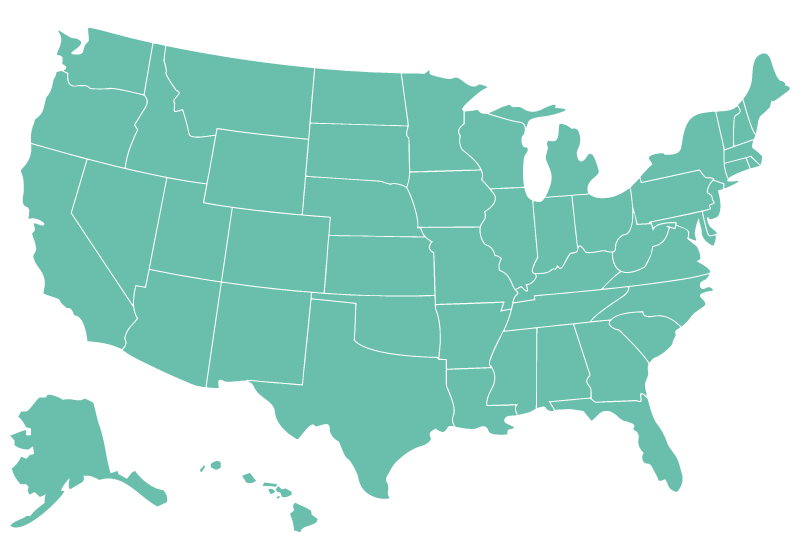
Each state is granted 2 Senators, for a total of 100.
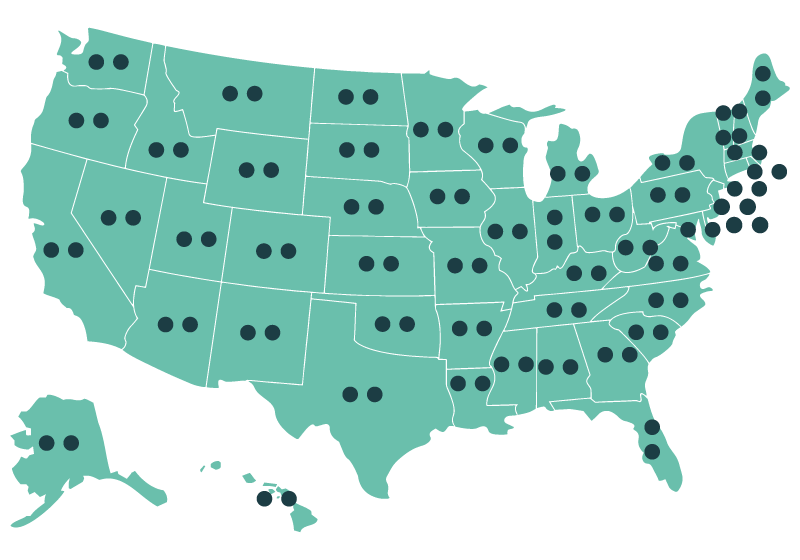
In the case of a tie, the Vice President serves as the 101 first vote.
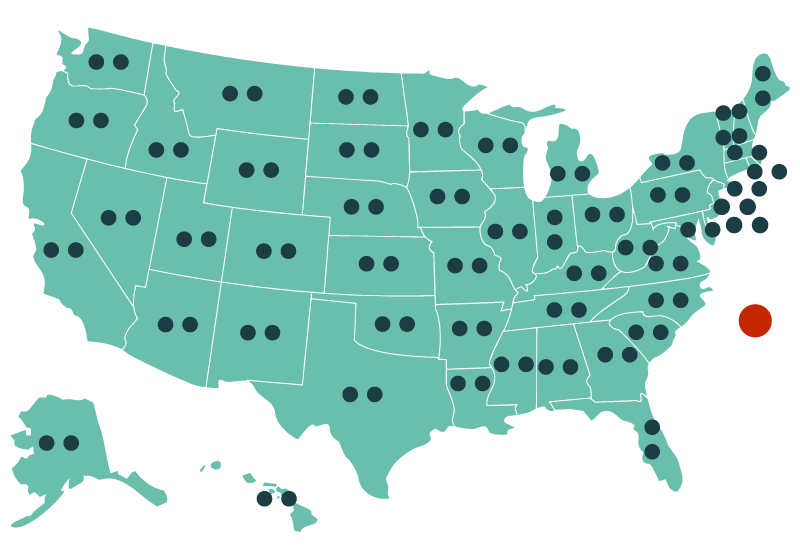
In order to control Congress, a party must be able to secure 51 of these 101 positions. (100 Congressional Seats + Vice President)
Currently, the Republicans control Congress. They hold 51 Congressional seats and the office of the Vice Presidency.
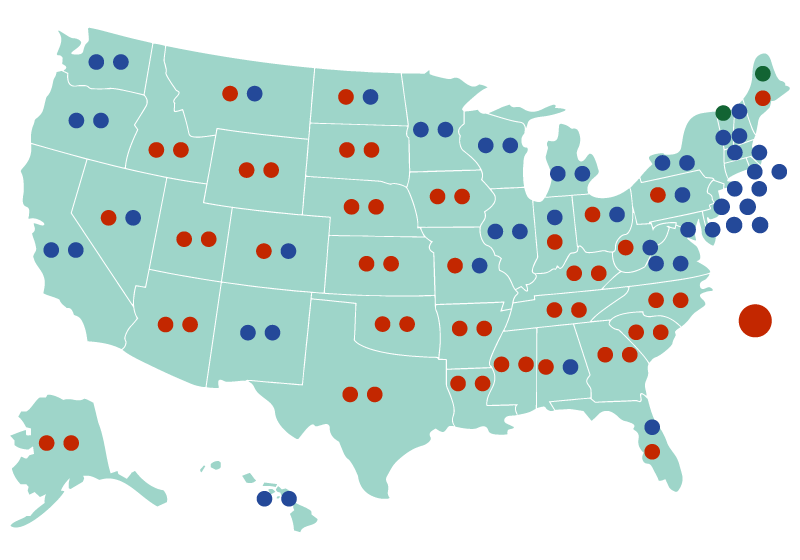
That brings us to the November 2018 Midterm Senate Elections.
The November 2018 Midterm Senate Election Specifics
Out of the 100 Senate Seats, there are 65 that do not have to be defended in an election this November. The Democrats have 23 of those seats, the Republicans hold 42.
That means that in the race for 51 seats (including the Vice President), the Republicans will have a 43 to 23 advantage.
35 seats are up for grabs in November.
The Republicans have to protect 9 seats. The Democrats have to protect 26 seats.
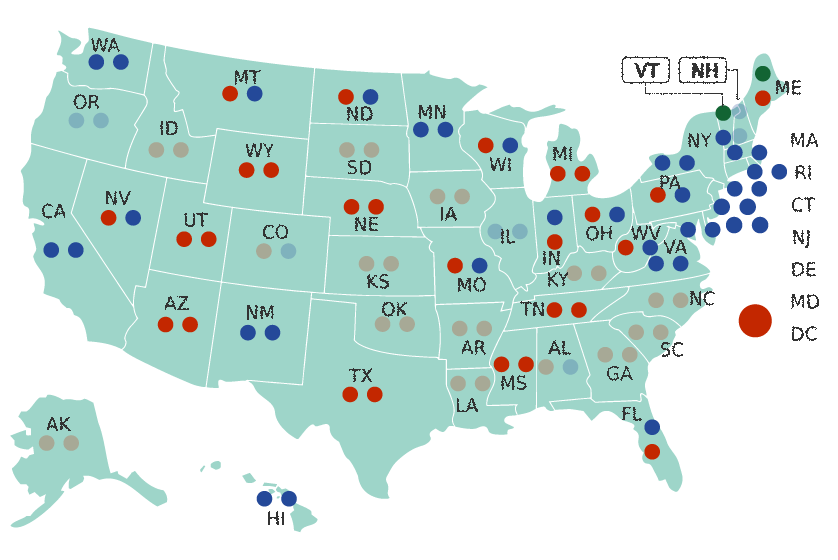
The Republicans are starting with 43 of 51 seats they need to maintain control of the Senate. They only have to hold on to 8 seats and can lose one without losing the majority.
The Democrats are starting with 23 of the 51 seats needed to take back the Senate. They need to successfully defend all 26 seats just to ensure they keep the 49 seats they currently hold. In order to win the overall Senate race, they will also need to flip 2 red seats.
In total, the Democrats need to win 28 races. The Republicans need to win 8.
What Current Mainstream Analysts See
The predictions made by mainstream media analysts agree on two things:
1. The political tone of the country overall is increasingly Blue.
2. The political state-by-state map of the Senate is Red.
There is no mainstream analytical outlet that provides a state by state analysis that predicts the Blue Wave is strong enough to take back control of the Senate. And if you look at the November elections through a whites-only lens — it’s easy to see why the can think that.
What White People See for the Republicans
The Republicans are running 9 races. Under traditional, white-centric methods of analysis, there is only one Red state in danger of flipping to Blue. That state is Nevada. With one to lose and a number of flappable blue states, the GOP is positioned to completely takeover the Senate. According to white people. And anyone that uses their methods of analysis.
The remaining 8 seats are held in 7 Red states that are considered to be safe. They are Utah, Wyoming, Nebraska, Tennessee, Texas, Arizona, and Mississippi.*
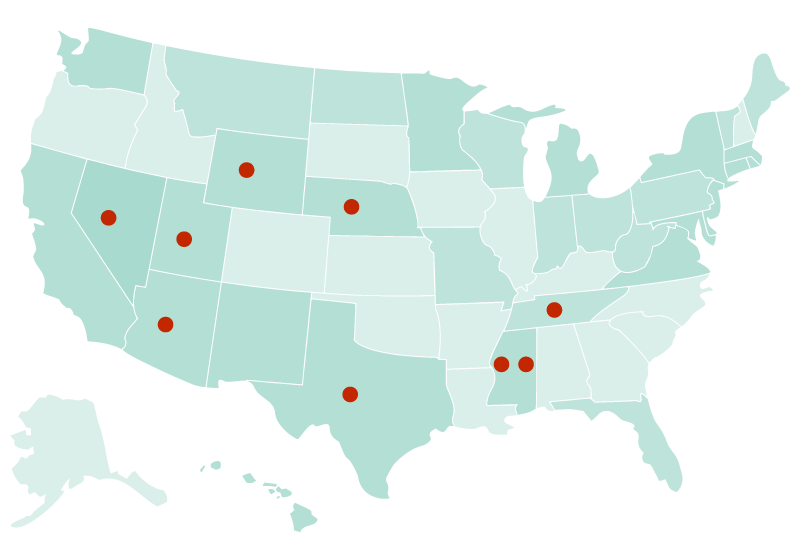
Utah, Nebraska, and Wyoming are considered deeply Red, and deeply white states. They overwhelmingly voted for Trump in 2016 and the vast majority of their state and local elections are handed to Republicans.
Tally: 42 no election+1 VP Vote+3 Red = 46. 5 more to win.
Mississippi has two seats up for grabs. And despite a black population that’s closing in on 40%, the Magnolia state is considered to be safely under Republican control. (Comparatively, Alabama’s black population is just over 25%)
Tally: 46 + 2 = 48. 3 to win.
With only 3 states left to win, there are 4 red seats left to hold. They are Tennessee, Nevada, Texas, and Arizona. Analysts predict that Nevada will turn Blue, but Tennessee will remain Red. And while Texas and Arizona are minority-majority brown states, analysts predict that these brown states will remain under white nationalist control.
Tally: 48 + 3 = 51. Republicans win.
Based on this analysis alone — without regard for the number of Blue seats that stand to be lost in November — it is reasonable to predict that the Republican party will walk away with control of the Senate. It’s still worth looking at what analysts are predicting for white Democrats, though, so we don’t fall victim to the same mistakes.
What White People See for the Democrats
The Democrats are running 26 races. 16 of them are in 15 safely Democratic states. 10 are up for grabs. They are Montana, North Dakota, Indiana, Wisconsin, West Virginia, Ohio, Missouri, Michigan, Florida, and Pennsylvania.
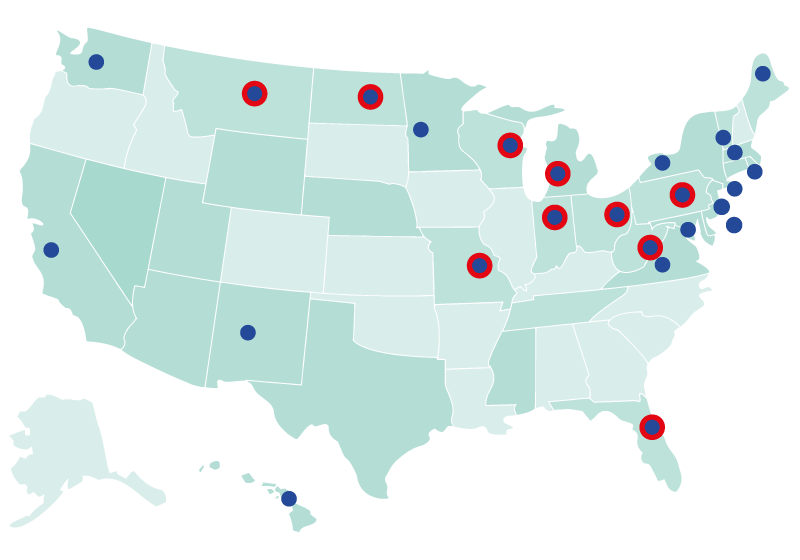
The Democrats will need to win all 26 races to keep the 49 seat minority they have now. To take control of the Senate, need to flip an additional 2 red seats.
As already described, while analysts predict that Nevada will flip form red to blue, all other Red seats are considered to be safe. They also predict that North Dakota, Missouri, Indiana, West Virginia, and Florida are in direct danger of turning Red. And that Pennsylvania, Ohio, Wisconsin, and Montana are not safe.
According to mainstream projections, the Democrats need to successfully defend 26 seats, flip Nevada, and 1 other Red state to take control of the Senate. The Republicans can lose 1 of 9 Senate races and still win.
The Problem with White Analysis
In a nation where close to 40% of the population does not identify as white, and under an administration that has blatantly targeted people of color as enemies of a white nation — white analysts can’t find a mathematical equation in which the Republican party loses at the polls.
That’s either because white people aren’t looking hard enough, or they aren’t looking at all.
The 2018 Midterms Elections are nothing other than a vote for or against white supremacy. And while white analysts are reporting on white behaviors and replicating white biases, this election cannot be properly analyzed without the formal inclusion of the voting blocs most affected and harmed by white supremacists — people of color.
As a result, the predictions presented above are completely useless to people of color. The methods used are unreliable. They are invalid. And in terms of mobilizing “minority” voting blocs, they are complete trash. So throw them away.
Faulty Analysis Leads to Faulty Strategies
Political analysis is important because it informs strategic decision-making. If the methods and presentation of analysis is faulty, they can translate into strategic mistakes that are fatal.
For example, using a white-centric lens, the Democrats have placed their focus on holding white states and leaving black and brown states and their communities to fend for themselves.
The Democratic Party has yet to put in the work to ensure the electoral mechanisms needed to get black and brown voters to the polls are active and functioning. There is no united rhetorical defense of the communities of color under white nationalist attack. And there is no evidence in the Democratic platform that any of the demands made by leaders in these communities will be included in their 2018 platforms.
Fatal. Mistakes.
Instead, Democrats are focusing on holding white states and trying to appease white voting blocs by using moderate white messaging and a moderate white agenda promoted by white centrist and conservative Democrats.
This is the same strategy they used when they lost the 2016 Presidential Election and every single Senate election since 2014 and every single House election since 2010. There was no reason to believe these strategies would work then, and there is even less of a reason to believe that these strategies will work now.
These mistakes are as avoidable as they are fatal, but only if voters of color are placed at the center of the Democratic party.
The Power of the People
People of color, statistically speaking, are close to overtaking white people in the United States. This is white nationalist’s greatest fear, and our greatest strength as a nation. It is also our greatest strategic advantage as a party — especially in the November 2018 Midterm Elections.
Two states, Texas and Nevada, are already minority-majority. And an additional 3 red states — Mississippi, Nevada, and Arizona — have populations of color that exceed 40%. Translated into the language of electoral politics — 6 of the 9 seats that white nationalists need to defend are in state where Democrats of color dramatically outnumber white Republicans.
And white nationalists know this.
Know Your Enemy: What White Nationalists See
White nationalists under the direction of individuals such as Robert Mercer, Steve Bannon, Stephen Miller, and Jeff Sessions currently control all three branches of government. They have the most power. They get to make the first moves. That means strategically, people of color are currently on the defensive.
In order to understand how we can out-strategize white supremacists, we have to know what they are thinking. And they are thinking that if black and brown people vote, they will lose control of this nation forever.
This is the one thing — and the only thing — we can all agree on.
What White Nationalists See for Republicans
White nationalists use extremely race sensitive analytical tools when designing their electoral strategies. They want white conservatives to win. They want everyone else to lose. And they especially want people of color to lose.
In terms of the Senate Elections, they have 42 states that are free from elections and 8 states that are up for grabs.

Out of these 8 states, there are 4 that are overwhelmingly white: Utah, Nebraska, Wyoming, and Tennessee. But there are 5 seats in 4 states where black and brown voters could destroy their chances of victory if they are not stopped from voting in the 2018 election: Mississippi, Texas, Arizona and Nevada.
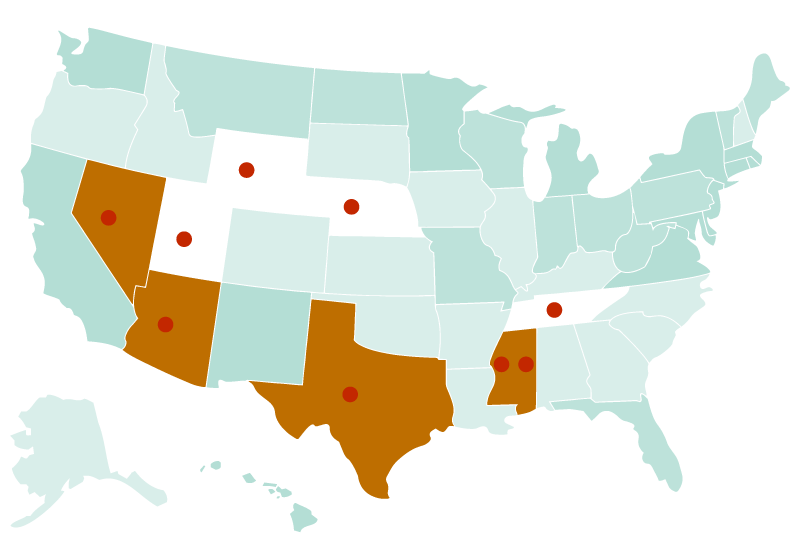
With a starting point of 43 of the 51 seats needed to keep control the Senate, the white nationalists need to hold the 4 white states up for grabs. That would bring them to 47 of 51.
They would then need to win 4 of the remaining 5 seats available to maintain a numerical advantage in the Senate. All of them are in black and brown territory.
Nevada is already expected to flip, and if the Latino voting blocs are mobilized in Texas and Arizona — white nationalists would lose control of all of their brown states.
If the black voting blocs are mobilized in Mississippi, then the white nationalists would lose control of 2 additional Senate seats.
Should white nationalists lose these states, and fail to flip any blue seats, the Democrats would take control of Congress with 54 seats to the Republicans’ 46. (not including the VP)
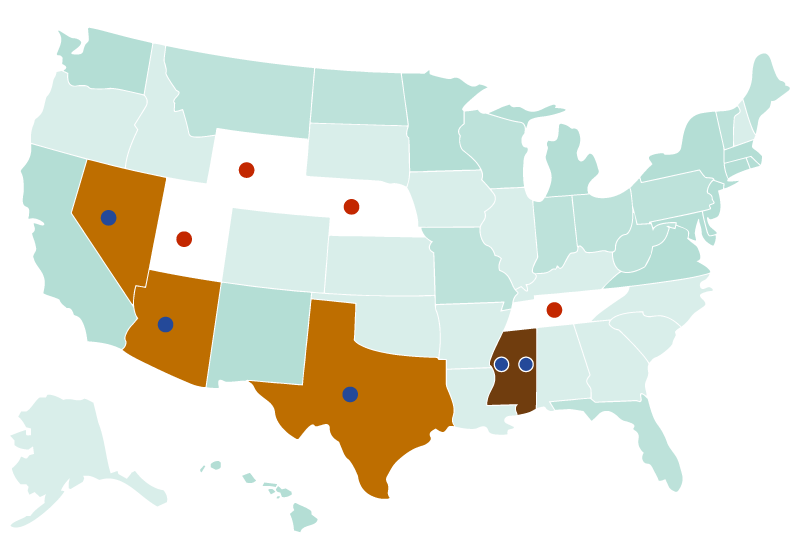
What White Nationalists Are Doing to Respond
White nationalists are not on solid ground, and they know it. They must not only defend their white nationalist agenda in conservative white states, but they must simultaneously attack Democratic strongholds in efforts to flip Democratic seats from Blue to Red.
Their most frequently used strategies are voter suppression and voter neutralization.
White supremacists can’t win elections if people of color are allowed to vote at the same rates as white people. The Republican Party and its affiliate organizations and think tanks have spent billions of dollars designing, passing, and implementing strategies designed to keep people of color away from the polls. And amongst the most popular and effective methods of voter suppression are gerrymandering, voter purging, voter ID laws, polling place closures, and felony disenfranchisement. These methods alone have specifically prevented over 30 million people of color from being able to exercise their Constitutional right to vote.
Still, victories led by voters of color in deep red territories such as Alabama have shown that these efforts are not necessarily enough. In addition to voter suppression, voter neutralization efforts are necessary.
There are a number of reasons that people of color do not exercise their right to vote that extend beyond voter suppression. For example, one of the most commonly stated reasons individuals give for not casting a ballot is: Both parties are the same.
People of color are correct when they say that either party has done anything to make their lives tangibly better. However, they are not correct when they say both parties are the same. At the federal level, the Democrats commit sims of omission. They refuse to act in support of or on behalf of people of color when they can, and they should. White nationalists, on the other hand, are on the attack.
In order to blur these lines, though, white nationalists are using public figures like Kanye West and Killer Mike to carry a white power rhetoric using political blackface. They are pardoning individuals like Jack Johnson and claiming that they will stop brown immigrants from stealing black jobs. They aren’t doing anything to tangibly make the lives of black Americans better, but they are exploiting moments of optical solidarity to confuse the electorate.
They are not doing this in efforts to mobilize black voters to vote Republican. We know this because they continue to suppress black votes through purging, voter ID requirements, and other suppressive measures. Their goal is to ensure that those that can be convinced not to vote by suggesting both parties are the same. And it’s an effective strategy if not properly countered.
White nationalists are targeting the Latino population by ramping up Nazi-like tactics such as separating families at the border and deporting immigrants en masse. In effort to continue purging the Unties States of brown people (and future brown voters) while avoiding consequences for their actions at the polls in minority-majority border states, white nationalists are blaming the Democratic party for these attacks and taking credit for trying to fix them.
And just as with black voters, the goal is not to open the Republican party to the Latino voting bloc. The goal is to keep enough brown voters away from the polls that they can continue to hold red seats in brown states despite a blatantly white nationalist agenda. If the Democrats do not counter their efforts to suppress and neutralize voters of color, these white nationalist strategies will guide the outcome of the 2018 Midterm Elections.
What White Nationalists See for Democrats
The Democrats are running 26 races.
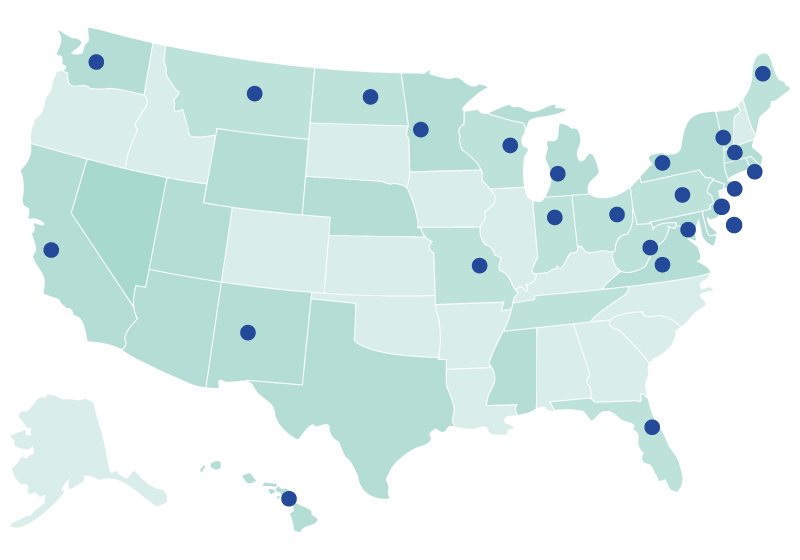
11 of them are in safely white liberal territories: Maine, Vermont, Massachusetts, Rhode Island, Delaware, Virginia, Rhode Island, Connecticut, Washington, and Minnesota*.
5 of them are in safely black, brown, and mixed states: California, New York, New Jersey, Maryland, and New Mexico.
With a base of 23 seats that will not face elections and an additional 16 seats safely resting in Blue states, the Democrats will have to 38 of the 51 seats they need to take control of the Senate. Just to maintain the 49-seat minority they have now, though, they will have to defend 10 states that are in danger.
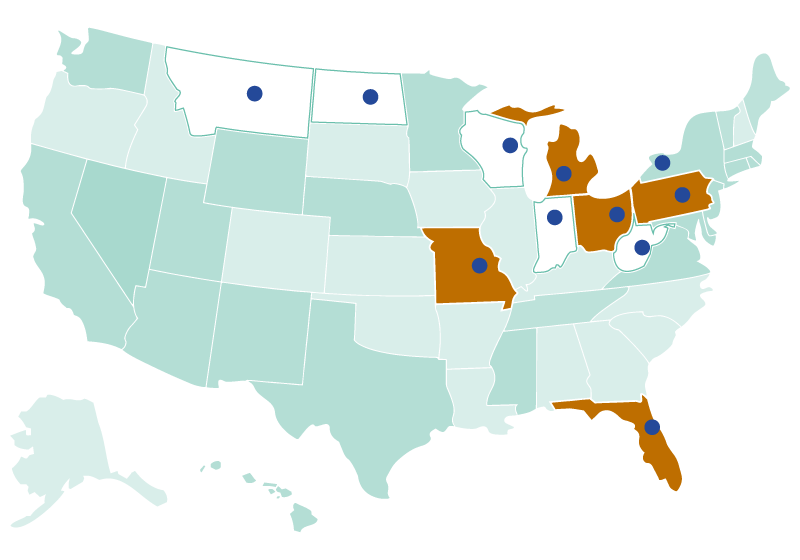
5 Blue Senate seats are in white dominated states where Democrats will not have voting blocs of color to pull them through to victory. They are West Virginia, North Dakota, Indiana, Wisconsin, and Montana.
5 Senate seats are in states where black and brown voting blocs could completely upend the election. They are Ohio, Missouri, Michigan, Pennsylvania, and Florida.
The Republicans are projected to lose Nevada. If they are able to hold their remaining 8 seats and nothing else changes — both parties will hold 50 Senate seats and the white nationalists maintain the tie breaking vote with the Vice President. If the Republicans are able to flip any Democratic seats, they will be able to build their control of the Senate while white nationalists build their control over people of color.
The Senate Election in White and Black….and Brown
Lets’ start from the beginning. There are 100 Senate seats total. In case of a tie, the Vice President (who is currently a Republican) casts the deciding vote.
Out of the 100 Senate Seats, there are 65 that do not have to be defended in the 2018 Midterm elections in November. The Democrats control 23 and the Republicans control 42.

35 seats are up for grabs. 9 of them are Republican. 26 are Democrat.
In the race for 51 seats (including the Vice Presidency), the Republicans will have a 43 to 23 advantage.
To take control of the Senate, the Democrats need to win 28 races. The Republicans need to win 8.
Of the 9 Republican Seats:
4 are in predominantly white states: Tennessee, Utah, Nebraska, Wyoming
3 are in predominantly brown states: Texas, Arizona, and Nevada
2 are in on state with a black population large enough to take control of the government: Mississippi
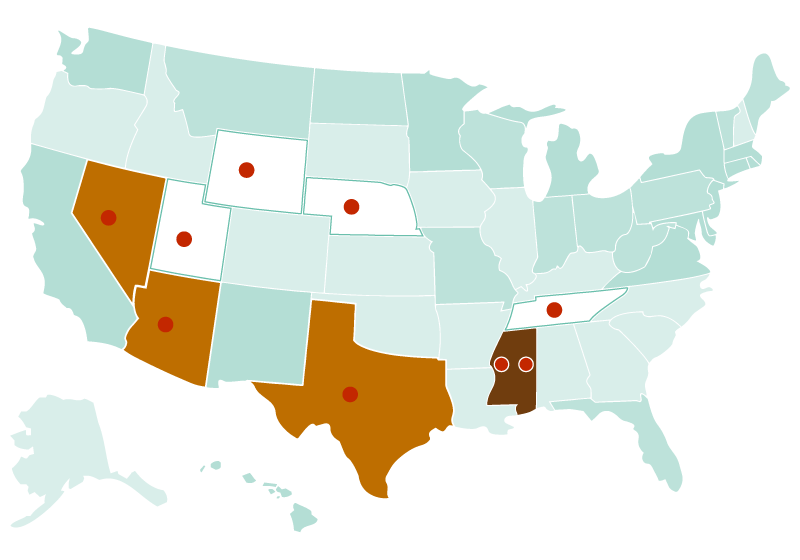
Of the 26 Democratic Seats:
Of the 26 Democratic seats up for grabs, 16 seats are safe: California, Washington, New Mexico, Maine, Vermont, Massachusetts, Rhode Island, Delaware, Virginia, Maryland, Rhode Island, Connecticut, New York, New Jersey, and Minnesota*
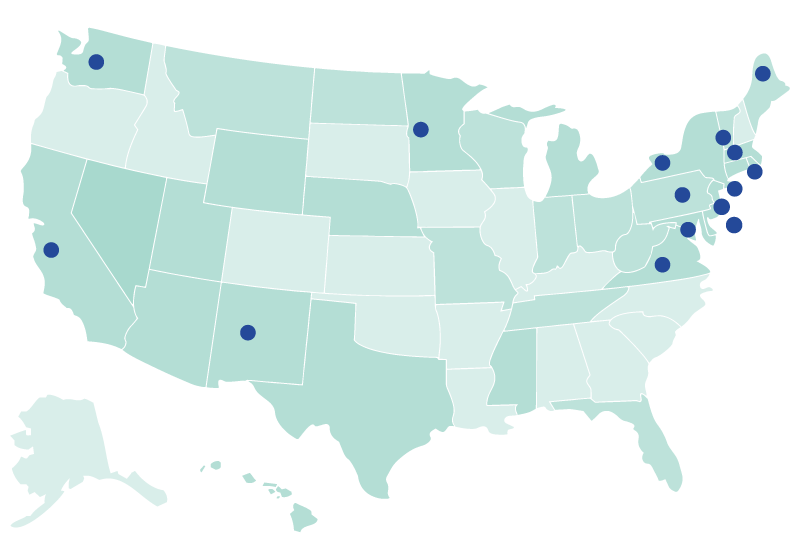
10 states are on shaky ground. 7 are dominated by white voters: Montana, North Dakota, Indiana, Wisconsin, West Virginia, Ohio, Missouri. 3 are in states where black and brown voters can decide the outcomes of each election. They are Michigan, Florida, and Pennsylvania
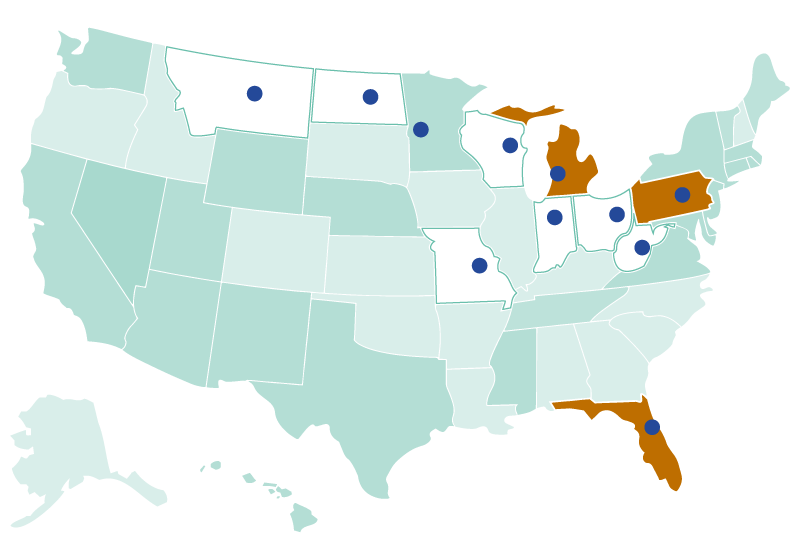
Eliminate the white states momentarily. That leaves us with 3 Democratic seats and 4 Republican seats in states where voting blocs of color dramatically outnumber white Republican voting blocs.
4 of the Senate seats up for grabs are in Black territory. (Mississippi*, Pennsylvania, Michigan). 4 are in brown territory. (Florida, Nevada, Arizona, Texas).

With a base of 26, if Democrats hold their 16 solid seats and win the 8 senate races in black and brown territory, that would bring them to a total of 50 seats. They would only need 1 more win to take control of the Senate.
On the other side of the aisle, if the Republicans lost control of all of their Black and Brown states, they would walk away with only 46 Senate seats plus the vote of the Vice President, unless they are able to flip at least 4 states from Blue to Red.
They Work Isn’t Done Yet, Folks: Crips, Queers, and Poor Folks
If the Democrats focus on only black voters or only brown voters, they will not be able to defend their seats in states where minority voting blocs are significant, but comprised of multiple races (Missouri, Ohio, and Indiana) or races held in predominantly white states (Montana, North Dakota, and Wisconsin).

In a twisted whim of fortune, though, white nationalists don’t only attack people of color. They also attack other populations they consider inferior. These populations include people from the LGBTQ communities, people with disabilities, and the poor.
The mobilization of these voting blocs by November are vital for two strategic reasons:
1. No fewer than 30–40% of populations of color are intersected with populations of disabled, queer and\or poor people. If efforts aren’t made to reach out to and mobilize poor people of color, disabled people of color, and queer people of color then they will not be able to secure enough votes to dominate the White Nationalist party.
2. In white states where Democrats are battling to defend Senate seats, mobilizing people with disabilities, people from the LGBTQ communities, and poor voters could increase their pool of potential voters by another 30–40%. For example, in West Virginia, 20% of the population is living with disabilities and even more are living in households in which at least on person has a disability. Between 4 and 10 percent of the population identifies openly as part of the LGBTQ community. Another 13% of people live below the poverty line.
If the Democrats commit to an agenda in which people with disabilities, poor people and folks from the LGBTQ community feel defended, they can dramatically increase their share of both white voting blocs and voting blocs of color. This will take the activation of networks and individuals in these communities that have previously been excluded from the electoral process.
If we fully activate the voting blocs of people of color, people with disabilities, poor people, the LGBTQ communities, and most importantly those living at their intersections — we can see a pathway to victory for the Democratic Party that is as clear as it is colorful.
What We Need to Do to Make it Happen
The strategies that are needed to get voters to the polls vary by community because the efforts made to prevent them from reaching the polls are often designed to target specific communities. Defense must respond to offense.
Black Voters
Black voter registration campaigns have been so successful that registration numbers are approaching those of white voters. Registration efforts still need to expand and continue, but the real issue facing black voters is getting them to the ballot box on voting day. Democrats have failed to properly outreach to black communities and refused to put items on their agendas that directly respond to their needs in general, and in the face of attacks from the Trump Administration. Democrats have also failed to send resources and support to black community media outlets and organizational networks that can mobilize voters in their community and help them cast a ballot.
Alabama taught us the strength of the black vote, but it was a close call. The Democrats cannot afford to force black individuals and organizations to foot the bill financially and energetically and hope to pull out a last-minute victory. They need to start moving immediately.
Brown Voters
Latino voters are the largest minority voting bloc and, considering the Nazi-like attacks on immigrant children and families, they might have the most at stake. Unlike with black and white voters, Democratic outreach and registration campaigns have not been designed to reach Spanish speaking Latino populations. As a result, white and black registration rates are in the upper 60th and 70th percentiles, Latino registration rates are an abysmal 59%.
This is for 2 reasons. The first reason is that, much like with their black voting blocs, the Democrats have not produced an outreach strategy or political platform that is designed to meet the needs and demands of Latino communities. The second reason is painfully simple: they do not produce enough educational or informational outreach materials in Spanish.
The battle for brown states and mixed states dependent on Spanish speaking voters will be won and lost on registration day.
The Other Others
Finally, it will take the mobilization of people with disabilities, people from the LGBTQ community, and poor folks to ensure that the number of voters necessary to take complete control of the Senate are able to cast a ballot. These communities not only represent white minorities that can be mobilized to secure victories against Republicans in white states, but they are intersected with communities of color in such a way that we cannot re-enfranchise communities of color without also reenfranchising the disabled, poor, and LGBTQ voting blocks that form their most solid and undefended bases.
If we empower those targeted most directly by the white nationalist party to defend themselves at the polls this November, there is no chance that the white nationalist minority can hold control of the Senate — or the nation. If we empower the targets of white nationalism to fight back at the polls, we can expect a map in which black, brown, blue, and all of the colors of the rainbow overtake the spread of bigotry and racism.
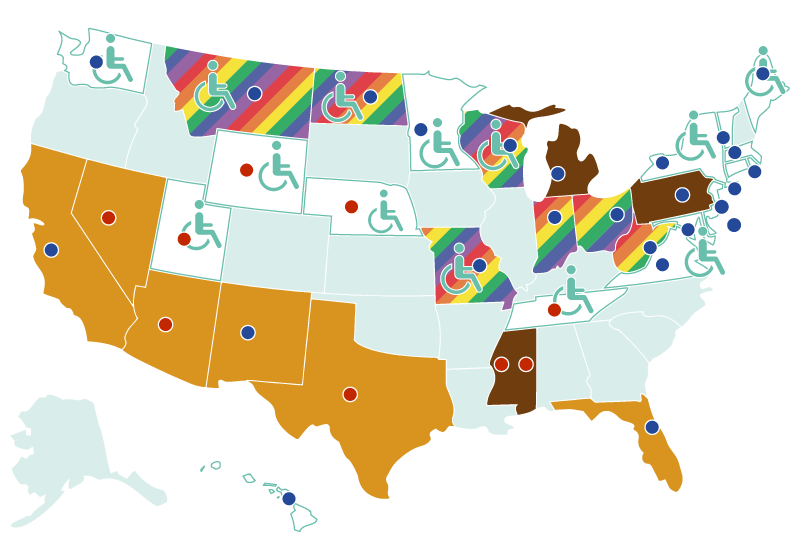
If we fail to mobilize the communities most violently targeted by the Trump Administration and the white nationalist Republican Party, the nation will not be red or blue on November 7, 2018. It will be white.
To learn more about Dr. GS Potter and the Strategic Institute for Intersectional Policy (SIIP), visit: http://strategycampsite.org/v2/



